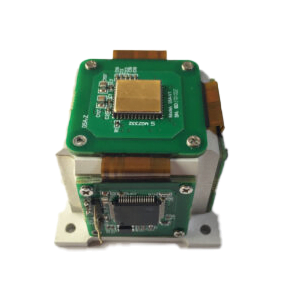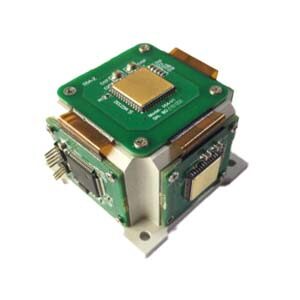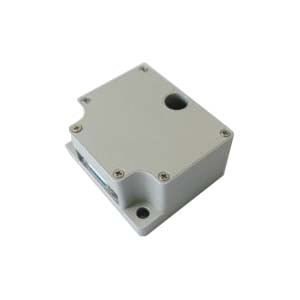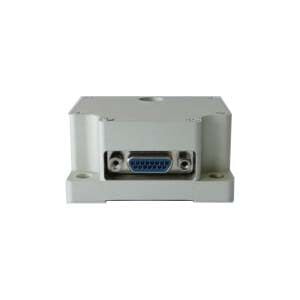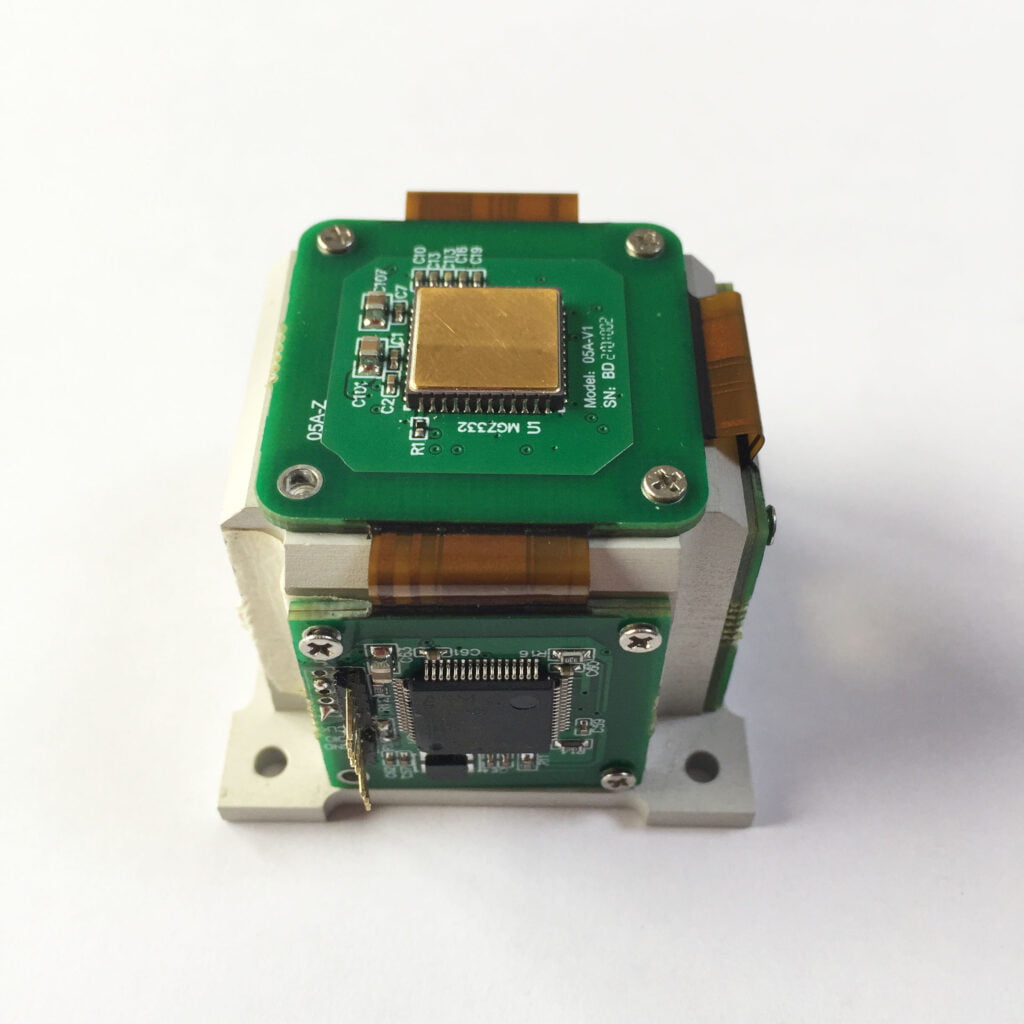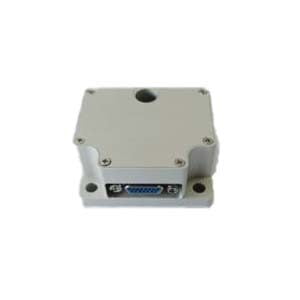IMU and AHRS are two algorithms for UAV attitude calculation and are widely used by various UAVs.
The difference between IMU and AHRS definitions
An inertial measurement unit is a device that measures the three-axis attitude (or angular rate) and acceleration of an object. Inertial Measurement Unit is the scientific name for inertial measurement unit. Generally speaking, an inertial measurement unit contains three single-axis accelerometers and three single-axis gyroscopes. The accelerometers detect the acceleration signals of three independent axes of the object in the carrier coordinate system, and The gyroscope detects the angular velocity signal of the carrier relative to the navigation coordinate system, measures the angular velocity and acceleration of the object in the three-dimensional space, and uses this to calculate the attitude of the object. It has a very important application value in navigation. To increase reliability, it is also possible to equip each axis with more sensors. Generally speaking, inertial measurement unit should be installed at the center of gravity of the object being measured. Theoretical mechanics tells us that all motion can be decomposed into a linear motion and a rotational motion, so this inertial measurement unit measures these two motions. The linear motion can be measured by an accelerometer, and the rotational motion can be measured by a gyroscope.
AHRS (Attitude and Heading Reference System) is commonly known as the attitude reference system. AHRS consists of an accelerometer, a magnetometer, and a gyroscope. It can provide the aircraft with heading (yaw), roll (roll), and pitch (pitch) information. This type of The system is used to provide accurate and reliable attitude and navigation information for aircraft. The real reference of AHRS comes from the earth's gravity field and the earth's magnetic field. Its static final accuracy depends on the measurement accuracy of the magnetic field and the measurement accuracy of gravity, while the gyroscope determines its dynamic performance. It shows that AHRS cannot work normally when it leaves the earth's gravity and magnetic field environment. Pay special attention to: the more orthogonal the magnetic field and gravity field are, the better the attitude measurement effect will be. That is to say, if the magnetic field and gravity field are parallel For example, at the geomagnetic north and south poles, the magnetic field here is downward, that is, it is in the same direction as the weight field. At this time, the route intersection cannot be measured. This is the flaw of the attitude system. At high latitudes, the route The angle error will become larger and larger. Currently, the heading solution unit used in multi-sensor data fusion by AHRS is the Kalman filter.

The difference between IMU and AHRS principles
The main difference between AHRS and IMU is that AHRS contains an embedded attitude data calculation unit and heading information, while inertial measurement unit only provides sensor data and does not provide accuracy and reliable gesture data functions. In fact, AHRS has one more magnetic field sensor than inertial measurement unit. Why is AHRS lower than inertial measurement unit and needs to rely on gravity field and magnetic field? This is determined by the sensor device architecture. AHRS sensors are typically low-cost MEMS sensors. The gyroscope and accelerometer of this type of sensor are relatively noisy. The gyroscope of the inertial measurement unit uses a fiber optic gyroscope or a mechanical gyroscope or a ring laser gyroscope. The cost of gyroscopes is high, and the accuracy of gyroscopes is also higher than that of MEMS. AHRS typically combines GPS and barometer to obtain location information.
inertial measurement units are mostly used in equipment that require motion control, such as cars and robots. It is also used in situations where precise displacement calculations using attitude are required, such as inertial navigation equipment for submarines, aircraft, missiles and spacecraft. Assuming that there is no error in the measurement of the inertial measurement unit's gyroscope and accelerometer, then the gyroscope can accurately measure the attitude of the object. Through the accelerometer, the displacement can be obtained by quadratic integration to achieve a complete 6DOF. In other words, with this theoretical inertial measurement unit moving anywhere in the universe, we can know its current attitude and relative displacement. This will not Limited to any field.
It can be seen from the above description. In fact, the AHRS has one more magnetic field sensor than the inertial measurement unit, but why is the AHRS level lower than the inertial measurement unit and needs to rely on gravity and magnetic fields? This is determined by the sensor device architecture. The sensors of AHRS are usually low-cost mems sensors. The noise of the gyroscope and accelerometer of this kind of sensor is relatively large. Taking a planar gyroscope as an example, the integration with ADI's gyroscope will drift by about 2 degrees in one minute. Under this premise, if there is no magnetic field and gravity field to correct the three-dimensional In the case of an axis gyroscope, basically the actual attitude of the object and the measured output attitude will be completely different after 3 minutes. Therefore, field vectors must be used for correction in this low-cost gyroscope and accelerometer architecture.And the inertial measurement unit is actually like this. Because we know that there is no absolutely accurate sensor, only a relatively accurate sensor. The inertial measurement unit's gyroscope uses a fiber optic gyroscope or a mechanical gyroscope. The cost of this kind of gyroscope is very high, and its accuracy is also very high compared to MEMS gyroscopes. High accuracy does not mean accuracy. The attitude accuracy parameter of inertial measurement unit is usually how many degrees per hour. For example, the low-end of xbow has 3 degrees per hour. If you use the accelerometer integral to determine the position, AHRS is unrealistic (it can float dozens of meters in one minute. And the speed increases quadratically). AHRS usually combines GPS and barometer to determine location.
Using three-axis geomagnetic decoupling and three-axis accelerometer, it is greatly affected by external acceleration. In environments such as motion/vibration, the output direction angle error is large. In addition, the geomagnetic sensor has shortcomings. Its absolute reference is the magnetic field lines of the geomagnetic field. The characteristic of geomagnetism is that it has a large range of use, but its intensity is low, about a few tenths of a Gauss, and it is very susceptible to interference from other magnets. If the instantaneous angle of the Z-axis gyroscope is integrated, the system data can be made more stable. Acceleration measures the direction of gravity. In the absence of external acceleration, it can accurately output the ROLL/PITCH two-axis attitude angle. This angle will not have cumulative errors and is accurate over a longer time scale. However, the disadvantage of the acceleration sensor's angle measurement is that the acceleration sensor actually uses MEMS technology to detect tiny deformations caused by inertial force. Inertial force and gravity are essentially the same, so the accelerometer will not distinguish between gravity acceleration and external force acceleration. When the system is in When making variable speed movements in three-dimensional space, its output will be incorrect.
The angular velocity output by the gyroscope is an instantaneous quantity. The angular velocity cannot be used directly in attitude balance. The angle needs to be integrated with the angular velocity and time to calculate the angle. The obtained angle change is added to the initial angle to obtain the target angle. The smaller the integration time Dt, the The more accurate the output angle is, but the principle of the gyroscope determines that its measurement base is itself, and there is no absolute reference outside the system. In addition, Dt cannot be infinitely small, so the cumulative error of the integral will increase rapidly as time goes by. Ultimately, the output angle is inconsistent with reality, so the gyroscope can only work on a relatively short time scale.
Therefore, in order to obtain a more realistic attitude angle without other reference objects, we must use a weighted algorithm to maximize strengths and avoid weaknesses, combine the advantages of both, discard their respective shortcomings, and design an algorithm to increase the weight of the gyroscope in a short time scale. Increase the acceleration weight on a longer time scale so that the system output angle is close to the true value.
Differences in application scope of IMU and AHRS
System reference differences
The measurement reference system chosen by AHRS is the earth itself, and the location of its measurement object is also a specific geographical location. The inertial measurement unit is different in that it measures position and motion relative to a specific inertial reference frame, which can be a fixed point such as a house, building, or a uniform motion system. Conceptually, inertial units of measurement are more widely applicable because the reference point of the AHRS, the Earth, is also an inertial reference frame (not absolute, just the Earth). using the Sun as the inertial reference frame in the solar system).
System composition difference
Although the measuring elements of AHRS and IMU are basically the same, due to the different reference systems of AHRS, AHRS has more electronic compass than inertial measurement unit. When AHRS monitors motion trajectories and status, due to the time drift problem of the gyroscope, when integrating the rotation angle during motion, the error will become larger and larger as time goes by. Therefore, an electronic compass is needed to calibrate the geographical azimuth of movement in time.
The main difference between an inertial measurement unit and an AHRS is the addition of an onboard processing system to an AHRS, which provides attitude and heading information, whereas an inertial measurement unit only transmits sensor data to additional equipment that calculates attitude and heading. In addition to attitude determination, AHRS can also form part of an inertial navigation system.
Nonlinear estimation forms such as the extended Kalman filter are often used to compute solutions from these multiple sources.
AHRS has proven to be highly reliable and is commonly used on commercial and business aircraft. AHRS is typically integrated with the electronic flight instrument system (EFIS), which is a core part of the so-called glass cockpit and forms the primary flight display. AHRS can be combined with an air data computer to form the Air Data, Attitude and Heading Reference System (ADAHRS), which provides additional information such as airspeed, altitude and outside air temperature.
Scope of application
AHRS is not as widely used as inertial measurement unit due to its choice of reference system. For example, the ER-MIMU-01 developed by Ericco uses high-quality and reliable MEMS accelerometers and gyroscopes. It communicates with the outside via RS422. The baud rate can be flexibly set between 9600 and 921600. The communication baud required by the user is set through the communication protocol. Rate. Its application fields are relatively wide, and can be widely used in pointing, steering and guidance in advanced mining/drilling equipment, initial alignment of weapons/drone launch systems, direction pointing and tracking in satellite antennas and target tracking systems, Precision attitude and position measurement in navigation-grade MEMS IMU/INS, north-seeking positioning in geodesy/land mobile mapping systems, oil exploration, bridges, high-rise buildings, towers, dam monitoring, geotechnical monitoring, mining and many other fields. AHRS usually uses sensors such as electronic compasses to be used in aviation flight measurement, ground motor vehicle remote control, drone tracking and other fields. Since inertial measurement unit has a flexible reference system, inertial measurement is often used in oil exploration, drilling and production systems, mobile surveying and mapping systems, and attitude reference systems for vehicle and ship attitude measurement.
I hope you have a basic and clear understanding of inertial measurement unit and AHRS technology. This article only introduces part of the knowledge about inertial measurement unit and AHRS. If you want to know more about inertial measurement unit and AHRS, you can find useful content in "More Technical Questions", and if you are interested in products, you can click "Products in Articles". If you have any questions, please leave your comments in "Ask a Question" below.
More Technical Questions
3.What is the Main Sensor in an IMU?
4.What Does IMU Mean for A Drone?
5.Internal Structure Analysis of IMU
6.What are the Application Scenarios of the IMU?
Products in Article
